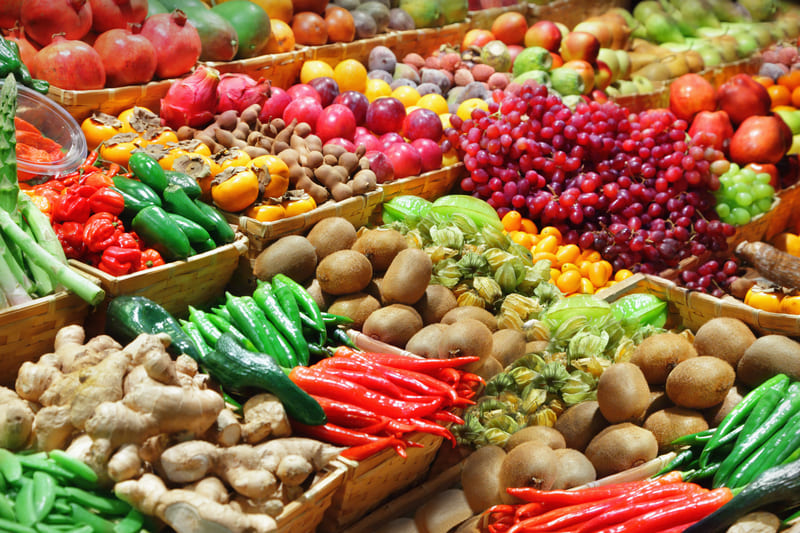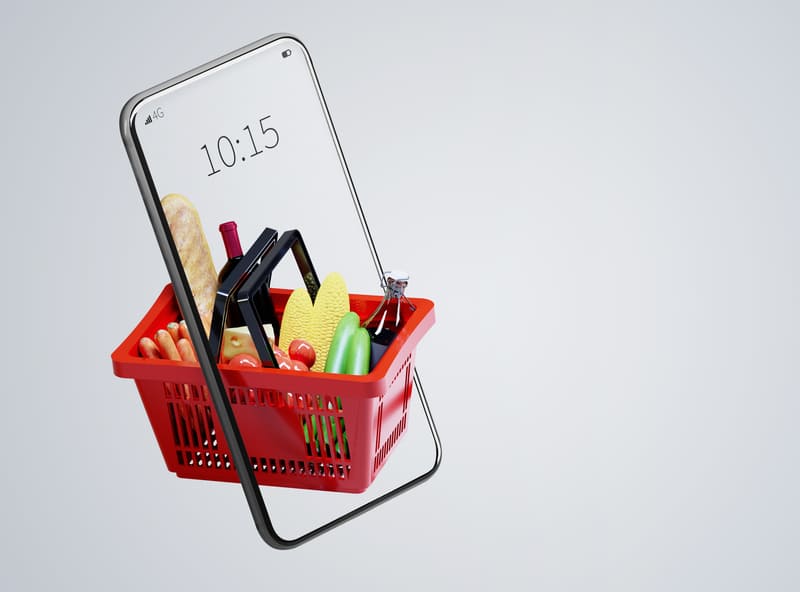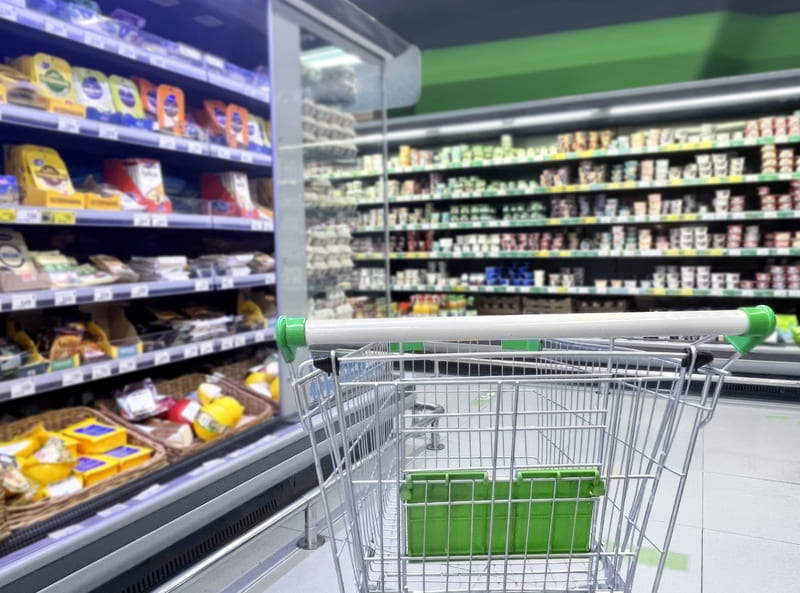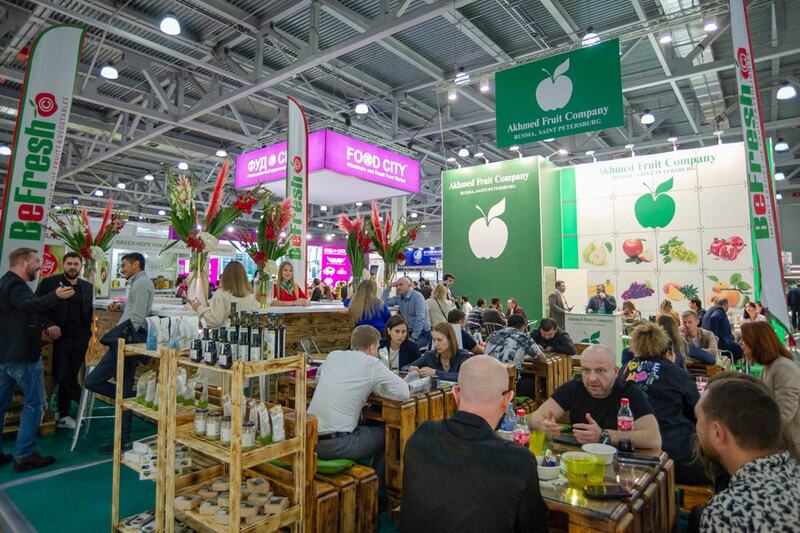Russian food market: new opportunities and great development prospects

Today, there are ample opportunities for development for foreign manufacturers and suppliers of food products on the Russian market
Over the past year, the Russian food industry has undergone significant changes that have led to higher prices, the exit from the market of the largest foreign manufacturers, whose share in some segments exceeded 50%, as well as difficulties with the packaging and components necessary to keep the food industry running.
However, the Russian food market continues to grow thanks to strong government support for domestic agricultural production and an ambitious national goal of increasing food exports by 70% by 2024 (to $45 billion). The Russian food industry is being modernized to meet all the needs of citizens and the growing number of strategic trading partners. In addition, a holy place is never empty: even if some foreign brands have simply “changed their sign”, today new foreign players have a good chance to gain a foothold in the Russian food market.

Incentives to consolidate or enter the Russian market
Niche release. According to experts, at the beginning of September 2022, almost a third of the largest foreign companies operating in Russia limited their activities in the country, some decided to leave the market by transferring a Russian division to a new owner, and several more announced their complete withdrawal. Such actions of international brands, of course, reflected on the shelves of grocery stores.
Some manufacturers have liquidated only part of their activities. For example, Danone stopped investment projects in Russia, but continued to produce goods for children and dairy products (Actimel, Danone, Activia, Danissimo, Prostokvashino, Rastishka, Smeshariki). At the moment, the French manufacturer plans to abandon international brands in Russia and is exploring ways to make them more relevant to the Russian market.
The PepsiCo brand acted in almost the same way, which curtailed its advertising activities and stopped selling soda under the Pepsi, 7 Up and Mirinda brands, but produces baby food and dairy products (Agusha, Chudo, Domik v derevne, Vesely Molochnik, Kubanskaya Burenka, Mazhitel, Immunele, BioMax, Lamber).
Nestle has stopped its development in Russia and investment in new projects but continues to produce some products for the Russian market (Nuts, BonPari, Komilfo, Fitness, Kosmostars, Cini Minis, Bystrov, Maggi, San Pellegrino, Vittel, Perier, Acqua Panna). Instead of Nesquik and KitKat brands, Nestle Russia today produces Khrutka cocoa and Goodmix bars.
The Coca-Cola brand has suspended production and announced plans to completely leave the Russian market (Coca-Cola, Fanta, Schweppes, Sprite, Bon Aqua, Fuze Tea, Dobry, Rich, Moya Semya, Pulpy, Burn, Black monster). The Mars brand announced the suspension of supplies, investments and the release of promotional products (M&M's, Snickers, Mars, Dove, Milky Way, Skittles, Twix, Bounty, Korkunov, pet food Pedigree, Whiskas, Kitekat, Chappi, Sheba, Cesar, Perfect Fit, Royal Canin). Nespresso, Lindt, Oreo, Rich, Paulig, Lavazza, Tchibo GmbH and others were also among the companies that suspended investments or completely curtailed their business in Russia.
Several alcoholic beverage producers have announced their intention to leave the Russian market by selling assets or at least reducing their presence: Absolut, Anheuser-Busch InBev (beer brands Bud, Corona, Stella Artois, Hoegaarden), Johnnie Walker, Ballantine's, Jameson, Guinness, Chivas Regal, Bernard, Budweiser Budvar, Gambrinus, Pilsner Urquell, Pernod Ricard, Smirnoff, Baileys, Captain Morgan, Fazer, Velkopopovický Kozel, Carlsberg, Havana Club, Heineken, Brown-Forman, Jack Daniel's, Finlandia, Jagermeister.
New foreign manufacturers and suppliers can replace the product categories occupied by companies that have previously left the domestic market. Now most of the dropped commodity items have been replaced either by Russian suppliers or partners from other countries: China, Turkey, India, Kazakhstan, Kyrgyzstan, Armenia, Ecuador and other countries of Asia, the Middle East and Latin America. Today, entering the Russian food market is a chance for foreign manufacturers to occupy the vacated niches and secure their place in the industry.

The growth of online retail. Since 2020, online retail in the food category has seen steady growth. This trend continues to this day.
For 11 months of 2022, Russians ordered products online for 592 billion rubles. This is almost 42% more than in the same period of 2021 (417 billion rubles). Moreover, food products are in the TOP-5 of the most popular products in the online segment. In the all-Russian popularity rating, they are in fourth position, and in Moscow and St. Petersburg they even take first place.
Analysts estimate that in 2022, the share of online in total food and beverage retail sales increased from 2.1% to 3%. It is expected that in 2023 the Russian e-grocery market may grow by 48% to RUB 925 billion including VAT, and the share of online sales in the total turnover of food retail sales may grow to 4.2%.
However, the online food ordering service has not yet reached its peak of development, unlike, for example, classical retail, so there are serious prospects for development in this niche. In addition, the largest players in the FMCG market are shifting their focus to developing an omnichannel sales model and using both their own online stores and sales through delivery services and marketplaces. Omnichannel players increase the range of products on online storefronts, which reduces the cost of logistics and maintenance of trading floors, and also gives the buyer a wide choice.
Entering the Russian food and beverage market, foreign manufacturers get the opportunity to sell their product not only in retail stores, but also in the online segment.

Infrastructure development. Despite various restrictions, warehouse and infrastructure construction in Russia continues. For example, according to NF Group, in 2022, 13% more warehouse space was commissioned in Russia than in 2021. Why is it so important? The fact is that the development of transport and storage infrastructure is no less important for retail and HoReCa than, for example, the range of products supplied. Simply put, there is no point in entering new markets if there is nowhere to store the products and there are difficulties in getting them to shop or restaurants. And today, Russian retail chains have their own developed logistics: their own transport, distribution centers, and the necessary related infrastructure. All this allows the retailer to reduce the cost of transporting goods, improve their storage conditions and reduce food waste. Thus, foreign producers and suppliers can be sure that the Russian transport and storage infrastructure will facilitate the sales of their food and beverages.

Government support for retail. According to statistics, retail accounts for about 14% of Russia's GDP. In addition, about 16% of the working-age population is employed in trade, and the share of tax revenues from retail is approximately 11.5%. Despite all the difficulties, in 2022, more than 250 investment projects were announced in the food market with a total investment of more than 520 billion rubles. All this emphasizes the importance and significance of this industry for the state, which regularly launches new support measures (soft loans, tax breaks, etc.). New partners of Russian chains can also take advantage of this, having the opportunity to quickly enter the huge food market in Russia.

WorldFood Moscow will be your launching pad in Russia
The WorldFood Moscow 2023 exhibition will allow foreign producers and suppliers to reach the maximum target audience in a short time and comprehensively solve the business problems of their company. Exhibitors will be able to find new partners among more than 18,000 retailers, wholesalers, HoReCa segment, and distributors, meet with decision makers, and demonstrate their products and novelties live. In addition, new bright formats for product presentations are planned in 2023: tasting areas, theme days, cooking shows, contests and blind tastings. Also, at the WorldFood Moscow 2023 exhibition, the WORLD OF TRADE Purchasing Center will be organized, within which suppliers and buyers will be able to conduct personal bilateral negotiations.
